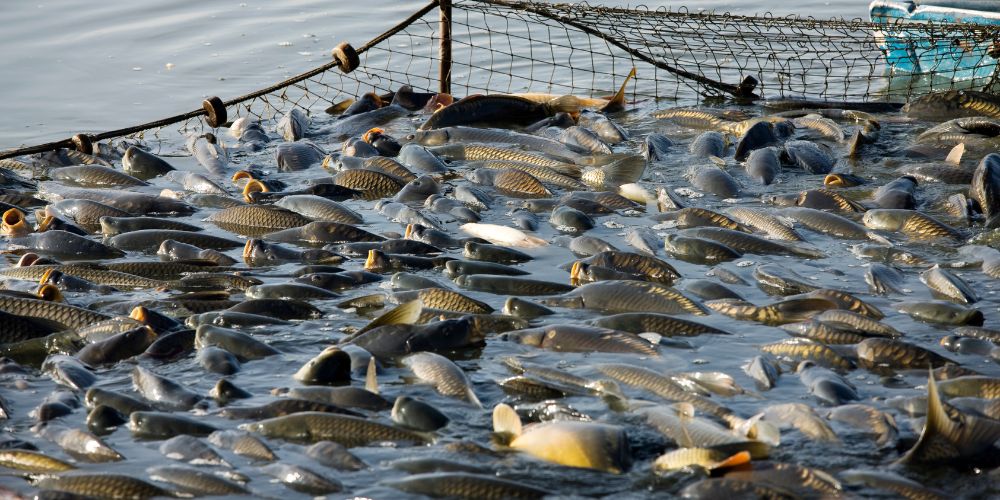Innovative Solutions for Sustainable Fishing: What You Need to Know
Marine biologist focusing on ocean conservation and plastic waste reduction.

Marine biologist focusing on ocean conservation and plastic waste reduction.

Sustainable fishing refers to practices that maintain fish populations and their ecosystems while allowing for the harvest of seafood. This concept is critical for ensuring that future generations can continue to enjoy seafood without depleting the oceans' resources. Overfishing, pollution, and habitat destruction pose significant threats to marine life, making sustainable fishing essential for biodiversity and food security.
Historically, fishing practices have often prioritized short-term gains over long-term sustainability. In the last 50 years, global seafood consumption has more than doubled, leading to a dramatic increase in fishing pressure. Currently, only 65% of global fish stocks are considered biologically sustainable, with the remaining stocks classified as overfished. This trend underscores the urgent need for innovative solutions in fisheries management to combat these challenges.
Rights-based fishery management (RBM) is an effective approach that grants fishers exclusive rights to harvest a certain amount of fish in a designated area. This method incentivizes sustainable practices by aligning the economic interests of fishers with the health of fish stocks. RBM has been shown to enhance community engagement, improve compliance with regulations, and lead to better overall fishery outcomes.
Countries like New Zealand and Canada have successfully implemented RBM systems, resulting in healthier fish populations and more resilient fishing communities. In the U.S., catch-share programs have proven effective in promoting sustainable fishing practices by assigning individual quotas to fishers.
The advent of smart boats equipped with advanced technology is revolutionizing fishing practices. These vessels utilize sensors, GPS, and data analytics to monitor catches in real-time, optimizing fishing strategies while minimizing environmental impact.
Monitoring systems that incorporate data analytics help fisheries managers track fish populations and assess the health of marine ecosystems. By analyzing data collected from fishing expeditions, stakeholders can make informed decisions to ensure sustainable practices.
Artificial intelligence (AI) and machine learning are beginning to play a crucial role in fisheries management. These technologies can predict fish behavior, identify populations, and optimize fishing practices, thus reducing bycatch and enhancing sustainability.
As we move towards 2025, several trends are emerging in sustainable fishing. The adoption of eco-friendly gear, such as biodegradable nets, is gaining traction among fishers. Additionally, seasonal and area closures are being implemented to allow fish populations to recover.
Innovations in fishing gear, such as nets designed to reduce bycatch, are becoming more common. For instance, using circle hooks instead of traditional hooks dramatically decreases the unintentional catch of non-target species.
Implementing seasonal and area closures allows fish populations to spawn and replenish. These measures are vital for ensuring long-term sustainability, as they help maintain ecological balance.
Marine Protected Areas (MPAs) are designated regions of the ocean where human activity is limited to protect marine ecosystems. MPAs have proven effective in enhancing biodiversity, restoring fish populations, and preserving critical habitats.
Efforts to expand MPAs include advocating for stronger international agreements and increasing community engagement in the management of these areas. By involving local fishers and stakeholders, MPAs can be more effectively monitored and enforced.
Sustainable fishing practices are intimately linked to marine biodiversity. Overfishing and destructive practices can lead to significant declines in fish populations, disrupting ecosystems and diminishing biodiversity.
Overfishing not only depletes targeted fish species but also affects the entire marine food web. For example, the decline of predator species can lead to the overpopulation of prey species, destabilizing the ecosystem.
There are numerous success stories of biodiversity recovery due to sustainable fishing practices. For instance, in the Caribbean, the establishment of MPAs has led to the resurgence of important fish populations, benefitting both the ecosystem and local fisheries.
Community-led initiatives often incorporate traditional knowledge, which can enhance the effectiveness of sustainable fishing practices. In many regions, fishers have long understood the importance of maintaining healthy fish populations and have developed practices that reflect this understanding.
In the Philippines, the Tagbanua people employ sustainable fishing practices that have been passed down for generations. Their methods include seasonal fishing and protecting certain areas, allowing fish stocks to recover.
Strengthening international agreements, such as the recent WTO Fisheries Subsidies Agreement, is crucial for sustainable fishing. Local regulations that empower fishers and communities can also enhance compliance and promote sustainable practices.
Supporting small-scale fisheries is vital for food security and biodiversity. These fisheries often employ sustainable practices and play a crucial role in local economies, making their support essential for sustainable fishing.
Consumers can play a significant role in promoting sustainability by choosing seafood from certified sustainable sources. Resources like Seafood Watch can guide consumers in making informed choices.
Raising awareness about the importance of sustainable fishing practices is essential. Advocacy campaigns can help educate consumers and stakeholders about the benefits of sustainable seafood choices.
Innovative solutions such as rights-based management, smart technology, and community-led practices are transforming sustainable fishing. These approaches contribute to healthier ecosystems, enhanced fish populations, and the resilience of fishing communities.
The journey towards sustainable fishing is ongoing. Continued collaboration among stakeholders, policymakers, and consumers is essential to ensure the future health of our oceans and the sustainability of fishing practices.
Key Takeaways:
— in Eco-Innovation
— in Eco-Innovation
— in Renewable Energy
— in Wildlife Conservation and Deforestation
— in Renewable Energy